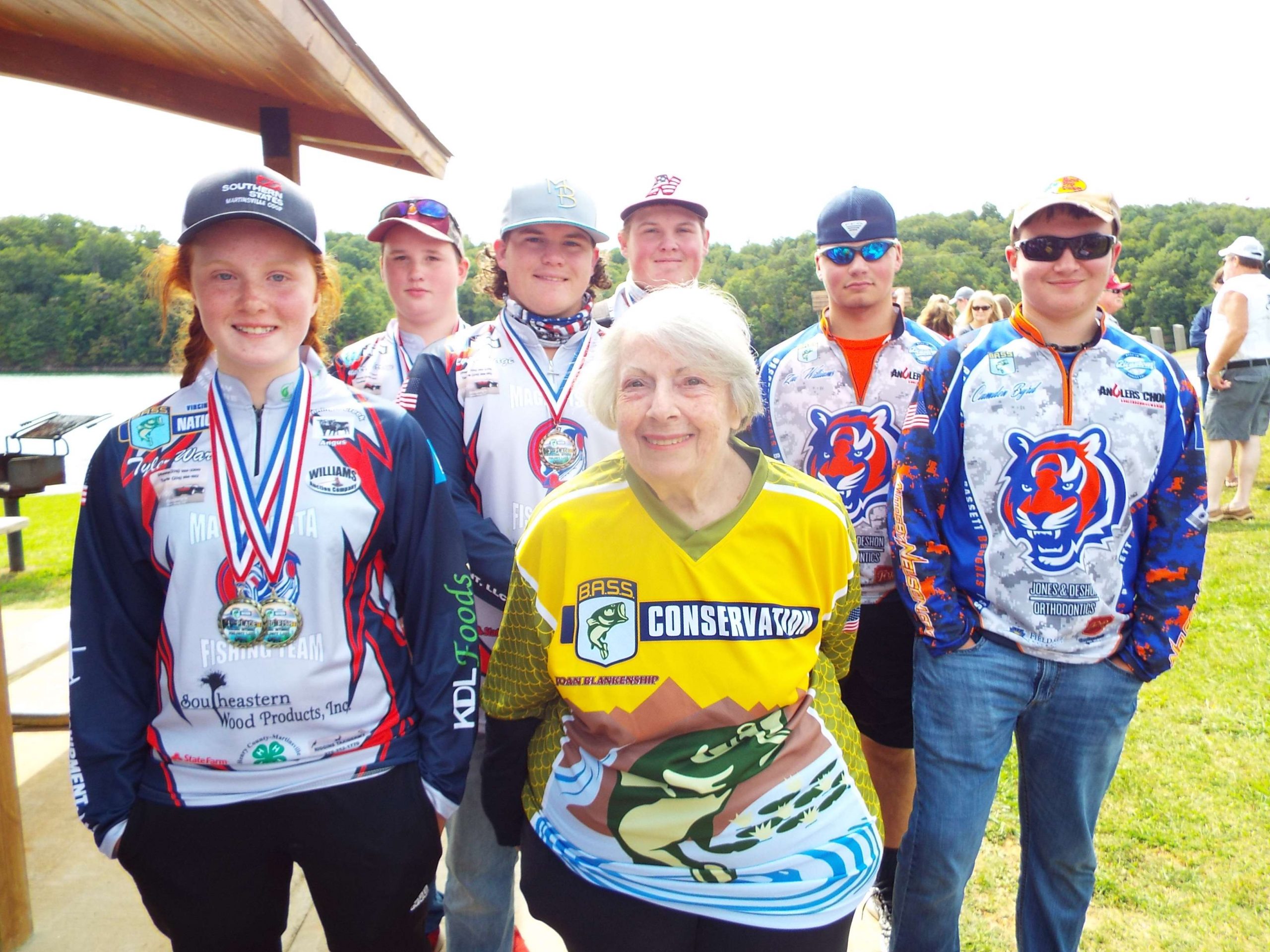
RIDGEWAY, Va. – B.A.S.S.’s emphasis on conservation is what gives the organization so much credibility, according to Joan Blankenship, long-time conservation director (CD) for the Virginia B.A.S.S. Nation (VBN).
“Tournament trails abound, and they are all competing to be the biggest and the best,” added the health science teacher and a member of the B.A.S.S. Nation of Virginia Directors.
Additionally, apathy is all too common. “Anglers do not seem to see the importance of maintaining healthy fisheries until they are no longer healthy,” she said.
But the B.A.S.S. Conservation program and state CDs bring issues to the forefront and show through example what can be done to protect and enhance fisheries.
“The Claytor Lake project is a good example of the majority of stakeholders working together to keep an ecosystem balanced and healthy,” said the woman who also served as VBN president from 2006 to 2010.
With VBN as a key partner in the project, a grant from Mossback paid for habitat that high school and college students assembled and placed in the summer of 2016. Friends of Claytor Lake (FOCL) provided boats and a barge.
“This summer, we have been given $5,000 by Appalachian Power Company to purchase additional Mossback habitat,” Blankenship said. “Anglers have agreed to meet in October to assemble the habitat and Friends of Claytor Lake will put into the lake with the assistance of John Copeland, Virginia Department of Game and Inland Fisheries biologist. Without his help and the help of FOCL, none of this would be possible.
“The grants that have been awarded to Virginia B.A.S.S. Nation have allowed me to fund several habitat improvement projects,” she continued, highlighting generous assistance by Virginia Electric Power Company.
Growing eel grass to plant for and in the lake also has been a team effort.
“There are only two weeks per year when you can do this (collect seed),” Blankenship said.
Chesapeake Bay Foundation donated first 100 seeds to begin the work, with Friends of Reservoirs providing financial assistance. Initial planting was at Patrick Henry Community College. A second planting at Pulaski County High School was funded by a grant from the Aquatic Ecosystem Restoration Foundation and the Aquatic Plant Management Society.
“The plants have to be caged when we put them in the lake and the project that provided most of the cages was funded by a grant from Shimano Canada/North America. Students from the Patrick Henry Community College fishing team assembled the cages,” said Blankenship, who hopes to get Virginia Tech involved in the project.
The Virginia CD also would like to see more anglers involved in every conservation project.
“There are numerous problems with shoreline erosion at several different lakes for different reasons,” she said. “Getting anglers to help with habitat restoration is almost impossible. They will pay to stock F1 tiger bass but won’t lift one finger to put in habitat to provide sources for forage fish to feed them.”
To help other CDs succeed and to maintain B.A.S.S.’s credibility as a conservation organization, Blankenship offers this advice:
“You need to build a network for every project and become partners with your state fisheries biologists, administrators, wildlife experts, high schools, teachers, colleges and fisheries organizations. You also need to know state, federal and local politicians.”





